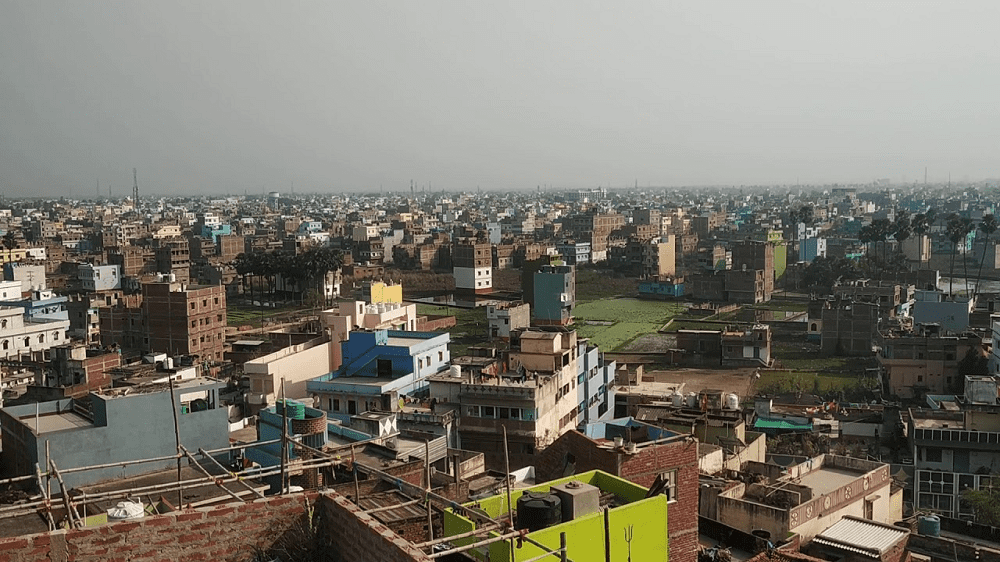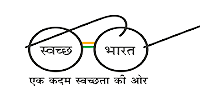
Kutri is a village in the Indian state of Odisha. Village life in Kutri, like in many rural areas of India, typically revolves around traditional practices and community-centered activities. Here are some aspects that might characterize life in Kutri village:
- Agriculture: The primary occupation is usually agriculture. Farmers in Kutri grow various crops depending on the season and soil conditions. Rice, pulses, and vegetables are commonly cultivated.
- Community Living: Village life is often centered around close-knit communities where people engage in social and religious activities together. Festivals, local fairs, and communal gatherings play a significant role.
- Traditional Practices: Traditional customs and practices are often preserved. This includes local crafts, folk dances, and rituals that are part of daily life.
- Local Markets: Villages often have local markets where residents can buy and sell goods. These markets are vital for daily necessities and also serve as social hubs.
- Education and Healthcare: Access to education and healthcare facilities may be limited compared to urban areas. Local schools and health centers serve the community, and there may be efforts to improve these services.
- Housing: Housing in Kutri might be traditional, with houses made of local materials such as mud and thatch. However, some homes may have modern amenities depending on the economic status of the residents.
- Transportation: Transportation can be limited, with reliance on bicycles, motorbikes, or public transportation for traveling to nearby villages or cities.
- Cultural Heritage: Kutri, like many villages, may have its own cultural heritage, including local languages, folk music, and traditional attire.
Life in Kutri reflects a blend of traditional practices and modern influences, with a strong emphasis on community and agriculture.
What is Required Kutri Village Life?
For improving life in a village like Kutri, several factors can be considered to address basic needs and enhance overall well-being. Here’s a broad outline of what’s required to support and improve village life:
- Infrastructure Development:
- Roads and Transportation: Better roads and transportation options can improve access to markets, healthcare, and education.
- Water Supply: Reliable and clean drinking water sources and sanitation facilities are essential for health and hygiene.
- Electricity: Reliable electricity supply for lighting, education, and small businesses.
- Education:
- Schools: Access to quality education with well-equipped schools and trained teachers.
- Adult Education: Programs to improve literacy and vocational skills for adults.
- Healthcare:
- Health Centers: Access to primary healthcare services with trained medical personnel.
- Awareness Programs: Health education on hygiene, nutrition, and preventive care.
- Economic Opportunities:
- Agricultural Support: Access to modern farming techniques, seeds, and tools.
- Skill Development: Vocational training and micro-enterprise opportunities to diversify income sources.
- Financial Services: Access to banking and credit facilities for savings and loans.
- Community Development:
- Local Governance: Effective local governance and community participation in decision-making.
- Social Services: Support for social welfare programs, including childcare and elder care.
- Environmental Protection:
- Sustainable Practices: Adoption of sustainable farming practices and waste management.
- Conservation: Efforts to preserve local natural resources and biodiversity.
- Cultural Preservation:
- Heritage: Support for local crafts, traditions, and cultural events that enhance community identity and tourism.
Addressing these areas can help improve the quality of life in Kutri and similar villages by creating a more supportive and sustainable environment.
Who is Required Kutri Village Life?
Improving village life in Kutri or similar areas requires a collaborative effort from various stakeholders. Here’s a breakdown of who is needed to support and implement changes:
- Government Agencies:
- Local Authorities: Village councils or panchayats play a key role in implementing development projects and ensuring the delivery of services.
- State and Central Government: For larger infrastructure projects, financial support, and policy implementation.
- Non-Governmental Organizations (NGOs):
- Development NGOs: Organizations focused on education, health, and rural development can provide resources, expertise, and training.
- Community-Based Organizations: Local groups that understand the specific needs and dynamics of the village.
- Community Leaders:
- Village Elders and Heads: They can facilitate community mobilization, decision-making, and ensure that initiatives align with local needs and traditions.
- Educational Institutions:
- Schools and Colleges: For providing quality education, vocational training, and adult education programs.
- Training Centers: For skill development and capacity building.
- Healthcare Providers:
- Medical Professionals: Doctors, nurses, and health workers for improving healthcare access and services.
- Health Educators: For spreading awareness about hygiene, nutrition, and preventive health measures.
- Businesses and Entrepreneurs:
- Local Entrepreneurs: To stimulate economic development through small businesses and micro-enterprises.
- Corporations: For corporate social responsibility (CSR) initiatives and funding for development projects.
- Residents of Kutri:
- Active Participation: Community members should be actively involved in development activities, decision-making, and maintenance of infrastructure.
- Academic and Research Institutions:
- Researchers and Academics: To conduct studies and provide data-driven recommendations for rural development.
Collaboration among these groups is essential to address the various needs of Kutri village and ensure sustainable improvements in living conditions.
When is Required Kutri Village Life?
Improving village life in Kutri—or any rural area—is an ongoing process that requires timely and sustained efforts. The timing and urgency depend on various factors:
- Immediate Needs:
- Emergency Situations: Immediate responses are needed during crises such as natural disasters or health emergencies.
- Basic Services: Basic needs like clean water, sanitation, and health care should be addressed as soon as possible.
- Short-Term Goals:
- Infrastructure: Development of roads, electricity, and water supply can be prioritized to quickly enhance living conditions.
- Education and Healthcare: Initiatives to improve school facilities and health centers can have immediate positive impacts.
- Medium-Term Goals:
- Economic Development: Implementing vocational training programs and supporting local businesses can create more stable income sources over time.
- Community Projects: Initiatives to improve community engagement and local governance should be rolled out progressively.
- Long-Term Goals:
- Sustainable Development: Projects aimed at environmental sustainability, cultural preservation, and long-term economic growth should be planned and executed over a longer period.
- Comprehensive Development: Continuous support and development to improve quality of life, health, and education should be integrated into a long-term strategy.
- Ongoing Evaluation:
- Monitoring and Evaluation: Regular assessment of the impact of various initiatives and adjusting strategies as needed ensures that development efforts remain effective and relevant.
In essence, the requirement for improving village life is continuous and adaptive to changing circumstances. Immediate needs should be addressed promptly, while long-term development requires ongoing commitment and planning.
Where is Required Kutri Village Life?
The need to improve village life applies broadly to areas like Kutri and similar rural communities. Here’s a look at where such improvements are most needed:
- Rural Areas:
- Villages: Places like Kutri, which are typically rural and may face challenges related to infrastructure, education, and healthcare.
- Remote Communities: Areas that are geographically isolated or have limited access to essential services.
- Underdeveloped Regions:
- Economically Disadvantaged Areas: Regions with lower economic development where basic services and opportunities are limited.
- Regions with High Poverty Rates: Areas where residents struggle with inadequate resources and lack of economic opportunities.
- Communities with Limited Infrastructure:
- Areas Lacking Basic Facilities: Villages that do not have reliable access to clean water, electricity, roads, or sanitation facilities.
- Communities with Poor Connectivity: Locations with limited or no access to modern communication and transportation networks.
- Agricultural Regions:
- Farming Communities: Areas where agriculture is the primary livelihood and improvements in farming techniques, resources, and support systems are needed.
- Cultural and Traditional Areas:
- Regions with Rich Cultural Heritage: Areas where preserving cultural practices while integrating modern amenities is important for maintaining community identity and heritage.
- Health and Education Needs:
- Areas with Limited Healthcare Facilities: Communities where access to medical care and health education is insufficient.
- Regions with Low Educational Attainment: Villages where educational facilities and opportunities are limited.
Efforts to improve village life should be focused on these areas to ensure that residents have access to the resources, services, and opportunities needed for a better quality of life.
How is Required Kutri Village Life?
Improving life in a village like Kutri involves addressing various aspects of daily living and community well-being. Here’s how you might approach enhancing village life:
- Basic Amenities and Infrastructure:
- Water Supply: Ensure access to clean and reliable drinking water through wells, piped water systems, or water purification systems.
- Sanitation: Improve sanitation facilities with proper waste disposal and sewage systems to prevent health issues.
- Electricity: Provide a consistent and reliable electricity supply for lighting, cooking, and other needs.
- Healthcare:
- Healthcare Facilities: Establish or upgrade health centers to offer primary care and emergency services. Ensure that facilities are equipped and staffed by trained professionals.
- Health Education: Promote awareness about hygiene, nutrition, and preventive care to reduce disease and improve overall health.
- Education:
- School Facilities: Develop or improve schools with better infrastructure, educational materials, and trained teachers.
- Adult Education: Offer programs for adult literacy and vocational training to improve skills and employability.
- Economic Development:
- Agricultural Support: Provide access to modern farming techniques, seeds, and tools to increase productivity and income for farmers.
- Skill Development: Implement vocational training programs to help residents acquire new skills and start small businesses.
- Financial Services: Enhance access to banking services, micro-loans, and savings programs to support economic activities.
- Community and Social Services:
- Community Engagement: Foster community involvement in decision-making and development projects to ensure that initiatives meet local needs.
- Social Support: Develop programs to support vulnerable populations, such as the elderly, children, and low-income families.
- Transportation and Connectivity:
- Improved Roads: Develop and maintain roads to improve access to markets, healthcare, and educational institutions.
- Communication: Enhance communication infrastructure, including access to mobile networks and the internet, to connect residents with broader opportunities.
- Environmental Sustainability:
- Conservation Practices: Encourage sustainable farming and waste management practices to protect local resources and the environment.
- Renewable Energy: Explore options for renewable energy sources, such as solar power, to provide sustainable and clean energy.
- Cultural Preservation:
- Support for Traditions: Preserve and promote local cultural practices, crafts, and festivals to maintain community identity and heritage.
Addressing these areas comprehensively can significantly improve the quality of life in Kutri and similar villages, creating a more supportive and sustainable environment for residents.
Case Study on Kutri Village Life?
Creating a case study on Kutri Village Life would involve a detailed examination of various aspects of the village to understand its current state and identify areas for improvement. Here’s a structured outline for a case study:
1. Introduction
- Background Information: Provide an overview of Kutri, including its location, population size, and key demographic details.
- Purpose of the Study: Explain the goals of the case study, such as identifying strengths and weaknesses in village life and proposing improvements.
2. Village Profile
- Geographical Location: Describe the village’s location, climate, and natural resources.
- Historical Context: Briefly discuss the history of the village and any significant changes over time.
3. Basic Amenities and Infrastructure
- Water Supply: Assess the availability and quality of drinking water, and the existing infrastructure for water supply.
- Sanitation: Examine the sanitation facilities, including waste disposal and sewage systems.
- Electricity: Review the reliability and coverage of electricity in the village.
4. Healthcare
- Healthcare Facilities: Describe the healthcare services available, including local clinics or hospitals.
- Health Issues: Identify common health problems faced by the residents and the availability of health education.
5. Education
- School Facilities: Evaluate the state of local schools, including infrastructure, resources, and student-teacher ratios.
- Educational Attainment: Analyze the level of education among residents and the availability of adult education programs.
6. Economic Development
- Agricultural Practices: Review the main agricultural activities and practices, including access to modern farming techniques and tools.
- Economic Opportunities: Examine the availability of vocational training, small businesses, and financial services.
- Income Levels: Assess the average income levels and economic challenges faced by residents.
7. Community and Social Services
- Community Engagement: Analyze the level of community involvement in decision-making and development projects.
- Social Support: Identify existing social services and support systems for vulnerable populations.
8. Transportation and Connectivity
- Roads and Transport: Assess the quality of roads and transportation options available to residents.
- Communication: Review access to communication services, including mobile networks and internet connectivity.
9. Environmental Sustainability
- Waste Management: Examine current waste management practices and their effectiveness.
- Conservation Efforts: Review any initiatives for environmental conservation and sustainable practices.
10. Cultural Aspects
- Cultural Heritage: Describe local traditions, festivals, and cultural practices.
- Preservation Efforts: Evaluate the efforts made to preserve and promote cultural heritage.
11. Challenges and Opportunities
- Key Challenges: Summarize the main challenges faced by the village in areas such as infrastructure, healthcare, education, and economic development.
- Opportunities for Improvement: Identify potential opportunities for development and improvement.
12. Recommendations
- Short-Term Actions: Propose immediate actions to address critical issues.
- Long-Term Strategies: Suggest long-term strategies for sustainable development and improvement.
13. Conclusion
- Summary: Recap the key findings of the case study.
- Future Outlook: Discuss the potential future developments and improvements for Kutri.
14. References
- Sources: List any sources, data, or references used in the case study.
This structured approach provides a comprehensive view of Kutri village life, helping to identify areas that need attention and proposing actionable steps for improvement.
White paper on Kutri Village Life?
Creating a white paper on Kutri Village Life involves developing a detailed, authoritative report that provides insights into the current state of the village and offers recommendations for improvement. Here’s a structured outline for a white paper on this topic:
White Paper: Enhancing Life in Kutri Village
1. Executive Summary
- Objective: Provide a brief overview of the purpose of the white paper, the key findings, and the main recommendations.
- Key Findings: Summarize the critical issues identified in Kutri and the opportunities for development.
- Recommendations: Highlight the primary recommendations for improving village life.
2. Introduction
- Background: Introduce Kutri Village, including its location, demographic details, and the rationale for the study.
- Scope: Define the scope of the white paper, including the areas of focus and the methodology used.
3. Village Profile
- Geographic and Demographic Overview: Describe the village’s location, population size, and demographic characteristics.
- Historical Context: Provide a brief history of the village and any relevant changes over time.
4. Current State of Village Life
- Basic Amenities and Infrastructure:
- Water Supply: Analyze the current status of water availability and quality.
- Sanitation: Evaluate sanitation facilities and practices.
- Electricity: Assess the reliability and coverage of electricity.
- Healthcare:
- Facilities and Services: Review existing healthcare facilities and services.
- Health Issues: Identify prevalent health issues and access to healthcare.
- Education:
- School Infrastructure: Examine the condition and resources of local schools.
- Educational Attainment: Assess educational levels and access to adult education.
- Economic Development:
- Agriculture: Evaluate current agricultural practices and support systems.
- Economic Opportunities: Review vocational training, small businesses, and financial services.
- Income Levels: Analyze average income and economic challenges.
- Community and Social Services:
- Community Engagement: Discuss the level of community involvement in decision-making.
- Social Support: Review available social services and support systems.
- Transportation and Connectivity:
- Infrastructure: Assess the quality of roads and transportation options.
- Communication: Review access to communication services.
- Environmental Sustainability:
- Waste Management: Evaluate current waste management practices.
- Conservation Efforts: Review environmental conservation initiatives.
- Cultural Aspects:
- Heritage: Describe local traditions and cultural practices.
- Preservation Efforts: Assess efforts to preserve cultural heritage.
5. Challenges and Opportunities
- Identified Challenges: Summarize the major challenges facing the village, including issues related to infrastructure, healthcare, education, and economic development.
- Opportunities for Improvement: Identify potential opportunities for development and improvement.
6. Recommendations
- Short-Term Recommendations:
- Immediate Actions: Propose actionable steps to address urgent issues.
- Priority Areas: Identify areas that should be prioritized for immediate intervention.
- Long-Term Recommendations:
- Sustainable Development: Suggest strategies for long-term sustainable development.
- Capacity Building: Recommend actions for strengthening local capacities and resources.
7. Implementation Plan
- Action Plan: Outline a detailed action plan for implementing the recommendations, including timelines, responsibilities, and resources needed.
- Monitoring and Evaluation: Describe how progress will be monitored and evaluated, and how feedback will be incorporated.
8. Conclusion
- Summary: Recap the key findings and recommendations.
- Future Outlook: Discuss the potential impact of the proposed changes and the vision for the future of Kutri Village.
9. References
- Sources: List all sources, data, and references used in the white paper.
10. Appendices
- Supplementary Information: Include any additional data, charts, or documents that support the white paper.
This outline provides a comprehensive framework for developing a white paper that addresses various aspects of village life in Kutri and offers practical solutions for improvement.
Industrial Application of Kutri Village Life?
Exploring the industrial application of village life in Kutri involves identifying how local resources, practices, and needs can be leveraged for industrial or economic development. Here are several ways industrial applications could be integrated into Kutri Village Life:
1. Agricultural Industry
- Agro-processing: Develop small-scale agro-processing units to add value to local crops. For instance, processing rice, pulses, or vegetables into packaged products can create job opportunities and boost the local economy.
- Cold Storage: Establish cold storage facilities to reduce post-harvest losses and preserve agricultural produce for longer periods.
- Farm Equipment: Introduce local manufacturing or assembly of farm equipment and tools to support efficient agricultural practices.
2. Renewable Energy
- Solar Power: Install solar panels to provide reliable and sustainable electricity. This can improve living conditions and support local industries by reducing dependence on unreliable power sources.
- Biogas: Set up biogas plants to convert agricultural waste and animal dung into energy for cooking and lighting.
3. Handicrafts and Cottage Industries
- Crafts and Textiles: Support local artisans and craftspeople by setting up workshops for traditional handicrafts, textiles, and pottery. This can preserve cultural heritage while providing economic opportunities.
- Local Products: Develop and market unique local products, such as handmade goods or specialty food items, which can attract tourists and generate income.
4. Tourism and Eco-Tourism
- Cultural Tourism: Promote Kutri’s cultural heritage and traditions through tourism. Develop tourist facilities, guided tours, and cultural events that highlight local practices and attract visitors.
- Eco-Tourism: Create eco-friendly lodges or guesthouses that focus on sustainable practices and natural beauty, offering tourists an authentic rural experience.
5. Health and Education Services
- Health Clinics: Establish health clinics that can serve as models for rural healthcare delivery, potentially incorporating telemedicine and local pharmaceutical production.
- Educational Centers: Develop educational centers focused on skill development and vocational training, preparing residents for various industrial and service sector jobs.
6. Water and Waste Management
- Water Purification: Implement local water purification systems to ensure clean drinking water and explore the possibility of small-scale water bottling enterprises.
- Waste-to-Energy: Develop waste management solutions that convert waste into energy or other useful products, reducing environmental impact and generating economic benefits.
7. Local Manufacturing
- Building Materials: Explore the production of local building materials using available resources, such as bricks or tiles made from local clay.
- Furniture and Household Goods: Set up small-scale manufacturing units for furniture and household items, utilizing local skills and materials.
8. IT and Digital Services
- Digital Literacy: Implement digital literacy programs to equip residents with skills needed for remote work or digital entrepreneurship.
- E-Commerce Platforms: Create or support e-commerce platforms that allow local producers to sell their goods beyond the village, accessing broader markets.
9. Transportation and Logistics
- Local Transport Services: Develop local transportation services to improve connectivity and facilitate the movement of goods and people within and outside the village.
- Logistics Hubs: Establish logistics hubs to streamline the distribution of agricultural and industrial products.
10. Community Development Projects
- Public-Private Partnerships: Foster partnerships between local government, businesses, and NGOs to support community development projects that address infrastructure, health, and education needs.
By integrating these industrial applications into the village life of Kutri, it is possible to enhance economic opportunities, improve living conditions, and support sustainable development while preserving the village’s unique cultural and environmental characteristics.






